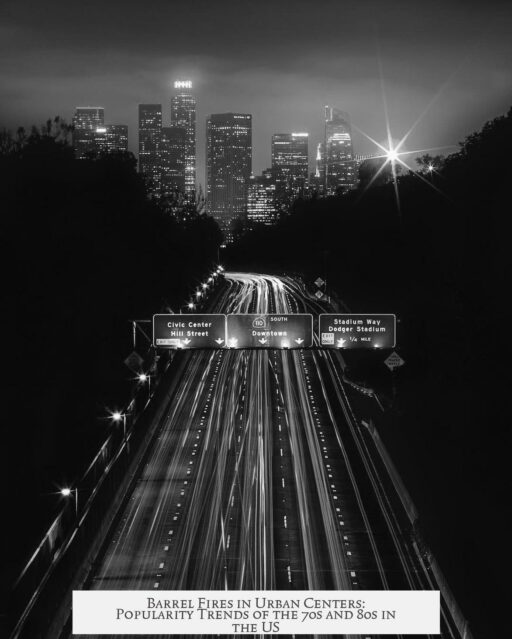Barrel fires gained popularity in urban U.S. centers during the 1970s and 1980s largely because less stringent environmental regulations existed at that time. However, their decline in urban areas is closely linked to growing government regulation and public health awareness that emerged during and after this period.
In the early 1970s, the U.S. Environmental Protection Agency (EPA) was established with a focus on improving air quality across the nation. Initially a small government body, the EPA’s role expanded significantly with the Clean Air Act Amendments of the 1990s. Although these amendments did not directly ban barrel fires, they created a legal framework to regulate pollutants from outdoor burning.
Local governments found these regulations convenient to enforce by limiting or banning all outdoor fires, including barrel fires. Cities and towns sought straightforward methods to meet federal air quality standards, and banning barrel fires became an effective tool. This regulatory environment influenced the rapid disappearance of barrel fires from urban landscapes post-1980s.
Public health concerns played a major role in this shift. Smoke from barrel fires releases pollutants similar to cigarette smoke. These include irritants causing asthma, bronchitis, emphysema, and lung cancer. Vulnerable groups—especially children, the elderly, and individuals with respiratory issues—face disproportionate health risks. Awareness of these harms grew steadily in this period, aligning with the EPA’s aims to improve air quality.
Specific examples, such as Washington State banning barrel fires entirely in 2000, illustrate the move from tolerance to prohibition. These bans reflect concerns over public health, safety, and welfare. The broader cultural shift around environmental protection, often termed the “Race to Save the Planet,” contributed to societal support for such regulations.
Overall, barrel fires were more common in urban areas during the 1970s and 1980s due to lower regulation and awareness. Their decline emerged due to combined federal and local efforts to control air pollution and protect public health.
- Barrel fires originated as a simple waste disposal method with limited early regulation.
- The EPA’s creation and Clean Air Act amendments laid legal groundwork to regulate outdoor burning.
- Health risks from smoke influenced growing public and governmental opposition to barrel fires.
- Local regulations and outright bans removed barrel fires from urban settings post-1980s.
Why were barrel fires more common in urban areas in the 70s and 80s?
Barrel fires were used for burning trash or yard waste when other disposal methods were limited. Urban areas had more waste and less space, making barrel burning a quick way to manage refuse before stronger laws were in place.
Did environmental laws in the 70s and 80s target barrel fires directly?
Not at first. The Clean Air Act provided a framework for regulating air pollution, but it didn’t specifically ban barrel fires. Over time, local governments added outdoor burning restrictions to support air quality goals.
What health concerns led to the decline of barrel fires in urban centers?
Smoke from barrel fires causes respiratory issues like asthma and bronchitis. Children, the elderly, and those with lung problems were most vulnerable. This pushed communities to reduce outdoor burning for public health.
How did government agencies contribute to reducing barrel fires?
The EPA’s creation in 1970 and later Clean Air Act amendments increased focus on air quality. Local governments expanded rules to curb outdoor burning, aligning with federal efforts to decrease pollution.
Were barrel fires banned everywhere at the same time?
No, bans varied by state and city. For example, Washington State banned barrel fires entirely in 2000 due to health and safety concerns, years after similar regulations started appearing elsewhere.
Why don’t we see barrel fires in cities now like in the 70s and 80s?
Barrel fires were phased out due to their pollution impact. Regulation and public awareness improved air quality and health, leading to cleaner alternatives for waste disposal in urban areas.




